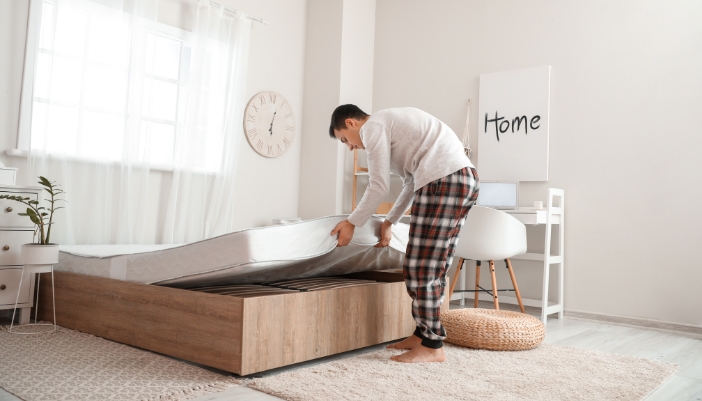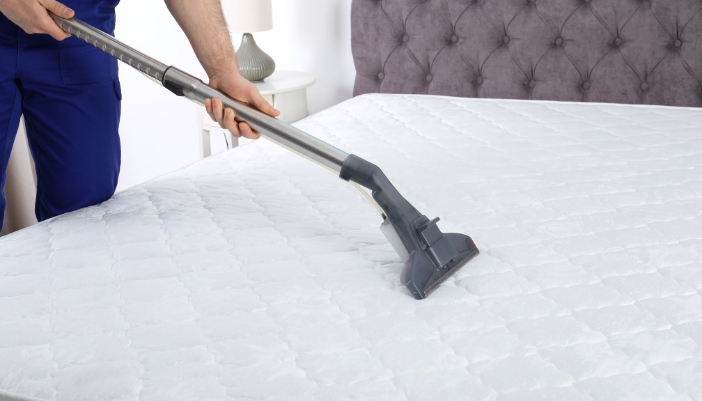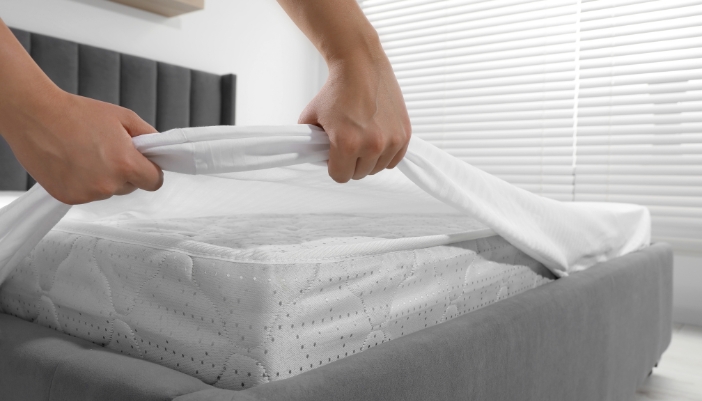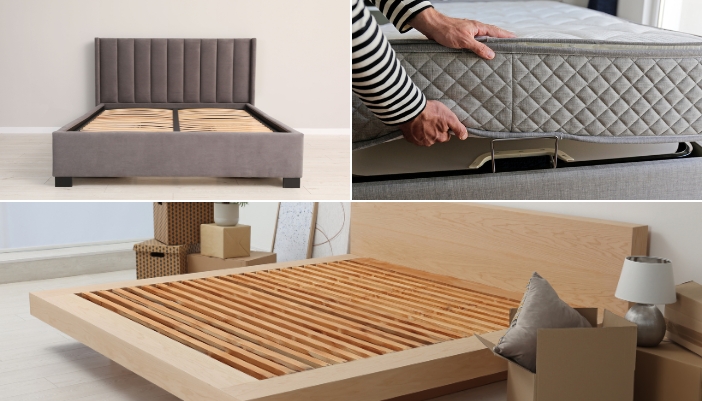The key to good sleep is having a good mattress, right? So, when you finally have a mattress that effortlessly supports your body and sleep position, it changes everything. Naturally, taking better care of it is necessary to last longer and ensure you have comfy, supportive sleep every night!
Of course, that means giving it a little TLC! Sure, cleaning it is a must, but there are other steps you might be missing to get the most out of your investment! But don’t worry; the steps are simpler than you think!
Move It, Move It

When it comes to mattress care, the simplest way to take care of your mattress is by rotating it 180 degrees so that the foot of the bed becomes the head of the bed and vice versa. Doing this every 3 to 6 months helps avoid uneven wear from sleeping in the same spots, especially for memory foam or hybrid mattresses!
Aside from rotating, flipping is another option, but this is usually only used with double-sided mattresses (meaning it can be slept on both sides) or innerspring mattresses. But always double-check the care instructions!
Proper Cleaning Techniques

Keeping your mattress clean isn’t just about good hygiene; it’s about ensuring a fresh and healthy sleep environment!
- Vacuuming: Start with vacuuming your mattress every couple of months. Use the upholstery attachment to remove dust, dead skin cells, and other debris.
- Spot Cleaning Spills and Stains: For spills, act fast. Blot the area with a clean, dry cloth to absorb as much liquid as possible. Avoid rubbing, as it can spread the stain.
- Deodorizing: Sprinkle baking soda over your mattress, let it sit for a few hours to absorb odors and moisture, and then vacuum it off thoroughly.
- Air It Out: If weather permits, let your mattress air out by placing it in direct sunlight to help eliminate bacteria and moisture!
- Addressing Dust Mites and Allergens: Wash your bedding regularly in hot water to kill off dust mites and remove allergen buildup.
- Deep Cleaning: Use a steam cleaner once a year, but ensure the mattress is completely dry before making the bed again to prevent mold and mildew growth.
Pro Tip:
To clean stains, mix a mild detergent with water and gently apply with a cloth. Blot gently and use as little moisture as possible to avoid soaking the mattress.
Go, Go, Mattress Protector

Another way to make your mattress last is by investing in a mattress protector. These help keep your mattress pristine by adding a layer of protection against outside elements!
- Benefits: A mattress protector is a barrier against spills, reduces direct contact and friction to reduce wear, and blocks dust mites, pet dander, and other allergens from accumulating in the mattress!
- Types: There are three types of mattress protectors: encasement protectors that completely cover the mattress and are sealed with a zipper, fitted that cover the top and sides of the mattress like a fitted sheet, and pads with extra cushioning.
- The Choice: Finding the best mattress protector for your bed requires considering the breathability of the material (cotton and bamboo are cooling), waterproof capabilities (polyurethane does this well), making sure it fits, and is easy to clean (many are machine washable!).
Get That Base

You might not think it, but having a proper foundation for your bed will keep it in shape — literally! The proper foundation evenly supports your mattress, distributes your weight evenly, and prevents sagging and indentations. And it provides better air circulation, which reduces moisture buildup (and the risk of mold and mildew!). So, to make sure you have the proper base, you’ll need to follow a few steps:
- Regular Checks Are Key: Inspect your bed frame or box spring annually for signs of wear, such as broken slats or weakened springs. These can affect your mattress's support and your sleep quality.
- Knowing When to Replace: If you find any damage during your checks or your foundation is 7 to 10 years old (or older), it might be time for a replacement. An old or damaged base can compromise your mattress's support and comfort.
- Selecting the Right Foundation: Make sure your new base is compatible with your mattress type. Memory foam and latex mattresses generally need solid or closely spaced slats for support, while innerspring mattresses might work better with box springs.
Pro Tip:
You can also use an adjustable base, but make sure your mattress is compatible. And if you don’t know, ask our experts — we’ll find out for you!
Sweet Dreams Start with Care

Caring for your mattress means more comfy nights and brighter mornings for longer! But if you don’t have the right mattress and foundation yet, don’t wait — check out the latest brand names at Hudson Appliance! Your dreamland awaits you!
Need help finding your sleep match? That’s a job for our sleep experts — contact us today and we’ll steer you in the right direction towards slumberland!